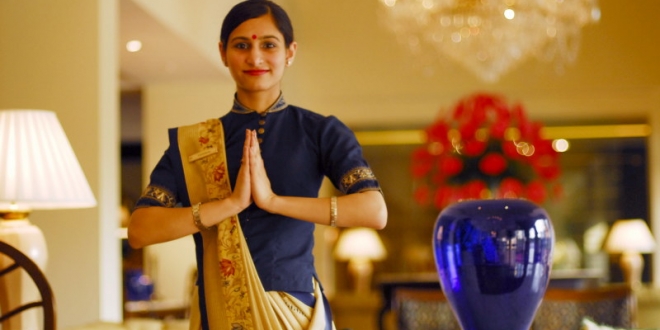Author Nirad C Chaudhuri dedicated his ‘ The Autobiography if an Unknown Indian’ to “the memory of the British Empire in India…/ Because all that was good and living within us/ Was made, shaped and quickened/ By the same British rule”.
Nothing can be further from truth than this.
The richest ‘nation’ (though the Western concept of nationhood was not there then), one of the strongest civilizations with five thousand years of history was plundered, ravaged; people’s confidence broken, history forgotten through five hundred years of wars, conflicts, slavery, etal.
It is seen that civilizations, in a stage of decay, have historically turned parochial and anti-universal, and nothing can be a better example than Hitler’s Germany.
However, the historic moment that we are today in is about negating both of these: phase of decline, and getting parochial. The best and the most beautiful of the past of this nation need to be learnt and nurtured for knowledge and national pride, people’s confidence, and that takes care of the obliterating history. Alongside, parochialism has to be fought with a greater global role and better standards of living domestically. On one hand the 30 million diaspora has a historic role, going beyond the rhetoric. And, on the other, the 50% of the population untouched by the 7 to 8% GDP growth-rate needs to be brought within the ambit of development.
India’s famed ‘demographic dividend’, with 66% of population below 35 years of age, and the national average age being just 25.5 years, the youngest in the world.
And this is also important because of India’s famed ‘demographic dividend’, with 66% of population below 35 years of age, and the national average age being just 25.5 years, the youngest in the world. That makes us the supplier of human capital of the world of tomorrow, where USA, UK, Germany, France, Japan and Canada, all have 60% or more people above 35 years, and average age varying from 35 to 44 years.
But this population needs skills, and not the hallowed degrees of no practical worth. This youth needs resources to start entrepreneurship. The educated young men and women need the education that is innovative and application-based.
Who can do this best but you? You, the New Global Indians, who have seen the world, those who fortunately know what is best for the economy, what the right skills are for the evolving knowledge economy.
There are very many reasons to cheer all around, within the nation and outside.
The 400-years old East India Company, which spearheaded the colonization of India, has been bought by Indian businessman Sanjiv Mehta recently. Two centuries old British financial firm Hitchens Harrison was bought over by Religare’s Malvinder-Shivinder Singh. Several MNCbrands have been bought over by Indian companies, likeAxon of UK, Derma of Singapore, Escada of Germany, Hobi Kozmetik of Turkey, Jaguar- Land Rover of UK, , Megasari of Indonesia, Tetley of UK, Typhoo of UK, Vladivar of UK, etc.
In top acquisitions by Indian companies recently have been Tata Steel taking over Corus, Bharti Airtel acquiring Zain, Hindalco taking up Novelis, ONGC integrating Imperial Energy within itself, Tata Motors taking JLR, Suzlon acquiring REpower, and many more. Not to forget, United Spirits taking over Whyte & Mackay!
Just five years ago, only five Indian companies were in the top 500 of the world: Indian Oil, Reliance, Bharat Petroleum, Hindustan Petroleum, ONGC, and four of them in the last 100 companies. Today, in 2010, 8 companies are in top 500, including SBI, Tata Steel and Tata Motors, and 5 of them are in the top 400 companies of the world. Tata and Reliance have been named as the 50 most innovative companies globally, while Mahindra and Indian Hotels are among the top 25 global brands of tomorrow.
Even, globally, the nine top Indian origin CEOs now come among the highest paid and valued 100 professional CEOs of the world (those who are not the promoters), Not just the famous ones- Vikram Pandit (Citigroup), Indra Nooyi (Pepsico), Sanjay Jha (Motorola), Shantanu Narayen (Adobe Systems), but others such as Dinesh C Paliwal (Harman International), , Surya Mahapatra (Quest Diagnostics), Rajiv L Gupta (Rohm & Haas), Francisco D’ Souza (Cognizant Technology), Ramani Iyer (Hartford Financial Services), and. Some of the Indian origin visionaries who have hit it big time globally and many of them now giving back to their nation include Amar Bose, Arun Netravali, Bharat Desai, Gururaj Deshpande, Kawal Rekhi, Pradeep Sandhu, Ram Shriram, Vinod Dham, and Sam Pitroda. More than 20 of the top 100 Universities and Institutes globally have today Indian origin Deans and Directors, like Ajay Menon, Amartya Sen, Dinesh Bhugra, Dipak Jain, Homi K Bhabha, Nitin Nohria, Michael Rao, Subra Suresh,VijayKumar,Yash Gupta, Raj Reddy, et al.
This talent pool of the world has developed over decades of exposure to top-notch education and institutions, organizations and educational. But this is just the proverbial tip of the iceberg. One which is evolving and needs to partner in the next phase of growth in this country. These men and women of learning, wealth, network and experience need to lay the foundation of the next road to progress, and mark a paradigm shift in India.
And, for that, skill-based learning and entrepreneurship based enterprise are two key drivers of growth. This is never to forget that the nation has its own base of thousands of years’ long legacy of the system of education, experiential learning, social integration of the learners, family values to give a platform for the performers to work from a strong base, community life, etc.
Going beyond the hype around the power of the Indian Diaspora around the globe, can we now proceed to harness the youth, the nature, the legacy that we have in abundance to create the next global leadership focused on development, education, peace and democracy?






